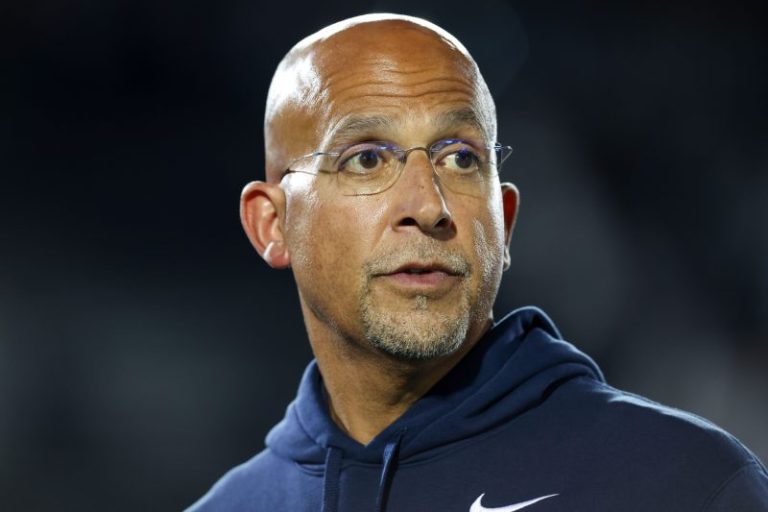This article discusses suicidal ideation. If you or someone you know is struggling or in crisis, help is available. Call or text 988 or chat at 988lifeline.org.
Duncan Keith can still see his mom standing behind the glass after she dropped him off for early-morning hockey practice.
He said she’d watch him for about 5-10 minutes, then wave and go work for 12 hours at a nursing home.
“Eyes on the back of your head,” she might say to him before games.
Keith, a former Chicago Blackhawks and Edmonton Oilers defender, recollected the moment as he was giving his Hockey Hall of Fame induction speech earlier this week.
He paused several times, choked up by his emotion and his connection to home. He was back in Fort Frances, in western Ontario, where he fell in love with a sport.
He looked out at his 12-year-old son he now coaches.
It’s what we all want from a sport as kids: That feeling we’re good at something or, at least, have a sense of belonging within it. Sometimes, we want to go as far as the sport will take us.
I wrote two years ago about how a number of elite athletes, from professional to Olympic level, started out playing multiple sports as kids until they settled on one. Athletic diversity is still a recommended way to go for kids but, according to medical professionals who have studied sports specialization, it isn’t the only way.
“I work at a 12-and-under tennis camp and I can’t tell these 11-year-olds who are some of the best in the country to go pick another sport now,” says Neeru Jayanthi, an orthopedist and the director of Emory Sports Medicine Research and Education in Atlanta.
Jayanthi acknowledged on a recent National Athletic Trainers’ Association (NATA) media briefing that we are moving away from general recommendations toward individual ones for sport specialization.
Each case is individual and deeply personal. While we hear stories about the undersized kid like Keith who chases a singular sport from an early age and breaks through, we continue to learn about devastating ones like that of gymnast Anna Baker.
Baker, now 25, started out as exclusively a gymnast as a young girl, achieved a relatively high level of success, but developed a condition that ultimately caused her life-threatening physical and emotional trauma.
“I know she does keep in social contact with the friends that she had made in gymnastics, but that was her home,” Baker’s mother, Michele LaBotz, told USA TODAY Sports. “We all perceive our kids to be special, but she has a bit of a sparkle and she had a leadership role in the local gym and it’s just too painful, I think for her still, to go back there.
“I’m not in any way, shape or form throwing gymnastics under the bus. This has just been our experience with the specialization process.”
We spoke with LaBotz, a sports medicine physician who also served on the NATA panel, about their story and draw insight from the discussion about the latest research on the subject and how it can help us make informed decisions for our kids.
YOUTH SPORTS SURVIVAL GUIDE: Pre-order Coach Steve’s upcoming book for young athletes and their parents
What is sports specialization as it pertains to youth sports?
Up to one-third or more of kids who play sports nationally, according to University of Wisconsin data, can be qualified as highly specialized.
Jayanthi, the orthopedist at Emory who has been at the forefront of research on the subject, says children who meet the criteria as highly specialized athletes can answer yes to these questions:
Are you choosing one sport as your main sport?
Do you quit all of your sports to focus on one sport?
Do you train or compete in a single sport more than eight months a year?
If you answer yes to two out of three of those questions, Jayanthi says, you are at least moderately specialized.
A recent University of Wisconsin study created a broader definition for a specialized youth athlete to include social and motivational factors.
According to study author David Bell, specialization occurs with “the intentional and focused participation in a single sport for a majority of the year that restricts opportunities for engagement in other sports and activities.”
There are often negative connotations attached with specialization for young athletes, with good reason.
What are the risks of being a specialized youth athlete?
Specialization is growing into a public health issue. According to Bell, a professor in the department of kinesiology at Wisconsin, we spend a minimum of around $5 billion per year on injuries attributable to sports specialization.
Medical experts associate high sports burnout and dropout rates among kids with high volume training, pressure to perform, overuse injuries, physical exhaustion and withdrawal.
Baker started gymnastics at 4 or 5 in Maine, where LaBotz, her mother, says youth sports programs are not nearly as competitive and intense as they can be. Baker didn’t do anything else. She won a state championship but developed hip pain at 14 that turned out to be avascular necrosis.
Avascular necrosis occurs when the ball and socket in the hip loses its blood supply and the bone starts to die. It ended Baker’s gymnastics career.
She had an initial surgery at Boston Children’s Hospital, but her hip continued to collapse. Her second surgery at Duke University took a fibula out of her lower leg and placed it in her hip for stability.
“It wasn’t an acute injury per se, it was a chronic injury that appears at least in part (to) be resulted from her gymnastics participation,” says LaBotz, the medical director of the athletic training program at the University of New England and an associate professor of pediatrics at Tufts University.
LaBotz said her daughter was fairly comfortable until she was about 19, when the pain became so significant she needed hip replacement surgery. Two months later, the hip got infected and she needed septic treatment.
“She went into the ICU,” LaBotz says, “and we almost lost her.’
“The hip has actually been pretty good since then,” she says, “but you can read the statistics about the role that kids who have these sports injuries and get introduced to opiate pain medications and the role that kind of plays in future use of those medications. That came up for us where Anna ended up using the oxycodone that she had been given way too many of and ended up using that in a non-therapeutic fashion.
“You hear about the role that these career-ending injuries play, and I think that her experience in the ICU, I think there’s some changes that happen to brain chemistry when people get that sick in the setup for future mental health issues – our family is also a statistic for that, where Anna has had some ongoing mental health issues.”
About a year ago, her mother says, she spent two weeks as an inpatient in a local hospital because of suicidal ideation.
“(It’s) hard to know to what degree this experience of sustaining this injury and all the medical stuff that evolved out of that, the impact that has had on her mental health,” LaBotz says, “but certainly the timing is suggestive that there was a causative mechanism there.’
LaBotz still says an emphasis on gymnastics from an early age most closely replicates the free play we want to help young kids with physical and mental development. She also recognizes what a tricky subject this can be.
Are there points when sports specialization is appropriate, even at a younger age?
Baker, like Keith, competed at her youth sport before specialization among kids became a hot topic of debate.
Within Keith’s portrayal of his childhood during his Hall of Fame speech, the hockey was endless, watching games with his family over Coke floats but also, as a small kid, doing jump squats and shooting pucks in the driveway.
“As early as I can remember, it’s all I ever wanted to do,” he said.
It’s hard to put a cap on connection. The well-known recommendation for kids is to play multiple sports when they’re young, to maintain a healthy body and variety in their lives.
But when we rely on only general guidelines, do we forget the emotional ties we have to a particular sport, the one that keeps us playing, even from a young age?
According to a Project Play survey released this year, more than half of sports parents (53%) justified the pressure to specialize because they say their child simply wanted to play high school sports.
“Some people are going to go for it,” says Jayanthi, the Emory orthopedist, “and we have to make sure we don’t disengage them and say, ‘Oh, gosh, you’re doing the wrong thing. You should start playing basketball.’ ”
The NATA recommends playing for one team at a time, playing a sport for less than eight months per year and at no more hours per week than your age.
Jayanthi says sports medicine organizations, such as the American Medical Society for Sports Medicine, the American Academy of Pediatrics and the American Orthopaedic Society for Sports Medicine, and research may suggest delaying sport specialization until at least 12 years old.
He suggests perhaps we should be looking at stage of development and not age
“I have authored/sat on nearly all of these committee meetings for this,” he wrote in an email, “but we don’t actually have data to support these recommendations.’
‘We still have work to do,’ he says.
Who is particularly at risk with sports specialization?
According to LaBotz, girls face increased risk of overuse injuries due to a number of issues, including them generally having less muscle mass and lower bone density than boys.
Still, in regards to her daughter, she says, “avascular necrosis in her age group, and girls in this age group, when you look it up, it’s pretty uncommon, but the population you see it in are dancers and gymnasts. So you kind of have to wonder, there’s a lot of strain that goes across the hip. Anna probably had some intrinsic vulnerability to this issue.’
For all kids, we can’t discount the social aspect of sports specialization the Wisconsin study also underscores. Our primary sports experiences, like Anna’s with gymnastics, don’t always happen in school. When you play on club or travel teams, you spend time away from school peers, and potential connections you could be making.
If you get injured, LaBotz says, you can be left floundering.
“We found that with Anna, she was in a wheelchair and she spent a great deal of time through her high school career, not being able to go to school because of the surgeries and she was not able to kind of get around,” she says. “When you become so entrenched in these extra school sports that if you get injured or there is another decision to either play or to leave, you’re not only losing that participation itself, but you’re losing the peer group that came with it.”
‘IS IT WORTH IT?’ Red flags to watch with youth sports programs
If we choose to specialize in a sport, how do we manage it?
Choosing to specialize is acknowledging what comes with it: time away from friends, potentially increased injury risks and each sport’s unique demands. Jayanthi suggests you get medical consultation and education about it.
We also need to realize, LaBotz says, we’re potentially eliminating a number of other sports or activities we might like.
But specialization also can be an invitation if your child feels strongly about doing it.
“Is it possible if there is a kid who says, ‘All I want to do is play tennis,’ that if you curate that experience correctly and tennis is the only organized sport that they’re interested in?’ LaBotz says. ‘As long as that is complemented with a variety of other activities and opportunities outside of organized sports, then, for sure that could be a well-rounded kid.’
She suggests avoiding simultaneous participation on multiple competitive teams. Megan Olson, a high school athletic trainer in Wisconsin who spoke on the NATA webinar, says we need to engage our athletes in taking ownership of their recovery, listening to their bodies and communicating early about pain.
“Rest is not the enemy of progress,” she said. “It’s part of your performance.”
As parents, we need to pay attention to how teams are run. Stay away from ones that focus a lot more on winning than development and ones that use too much redundancy in training.
And we need to look inside ourselves.
“These days, my favorite hockey moments are with my son Colton and his teammates,” Keith said during his Hall of Fame speech. “The road trips, the tournaments, the early mornings, seeing the game through his eyes, has reminded me what this sport is really about: Joy, connection, and being a part of a team that’s bigger than yourself.”
We need to let them try the sports they want, too, and support the ones they select. No matter who we are.
Borelli, aka Coach Steve, has been an editor and writer with USA TODAY since 1999. He spent 10 years coaching his two sons’ baseball and basketball teams. He and his wife, Colleen, are now sports parents for two high schoolers. His Coach Steve column is posted weekly. For his past columns, click here.
This post appeared first on USA TODAY










